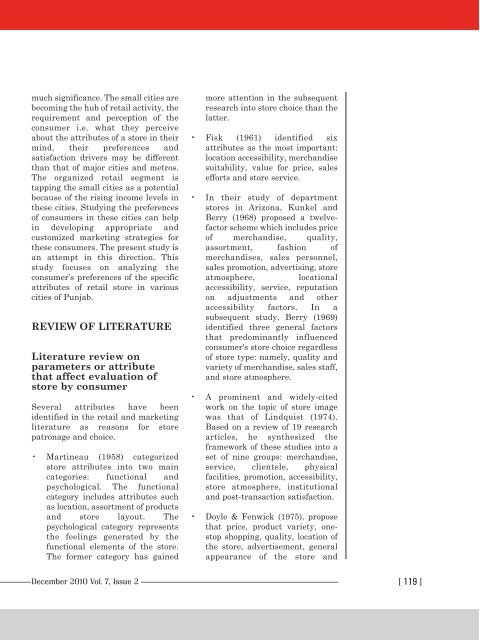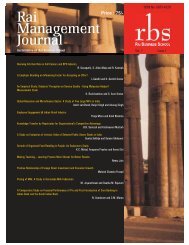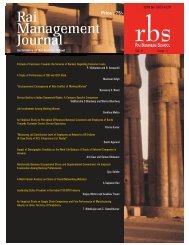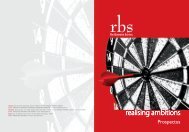ISSN No - RBS
ISSN No - RBS
ISSN No - RBS
You also want an ePaper? Increase the reach of your titles
YUMPU automatically turns print PDFs into web optimized ePapers that Google loves.
much significance. The small cities arebecoming the hub of retail activity, therequirement and perception of theconsumer i.e. what they perceiveabout the attributes of a store in theirmind, their preferences andsatisfaction drivers may be differentthan that of major cities and metros.The organized retail segment istapping the small cities as a potentialbecause of the rising income levels inthese cities. Studying the preferencesof consumers in these cities can helpin developing appropriate andcustomized marketing strategies forthese consumers. The present study isan attempt in this direction. Thisstudy focuses on analyzing theconsumer’s preferences of the specificattributes of retail store in variouscities of Punjab.REVIEW OF LITERATURELiterature review onparameters or attributethat affect evaluation ofstore by consumerSeveral attributes have beenidentified in the retail and marketingliterature as reasons for storepatronage and choice.• Martineau (1958) categorizedstore attributes into two maincategories: functional andpsychological. The functionalcategory includes attributes suchas location, assortment of productsand store layout. Thepsychological category representsthe feelings generated by thefunctional elements of the store.The former category has gainedmore attention in the subsequentresearch into store choice than thelatter.• Fisk (1961) identified sixattributes as the most important:location accessibility, merchandisesuitability, value for price, salesefforts and store service.• In their study of departmentstores in Arizona, Kunkel andBerry (1968) proposed a twelvefactorscheme which includes priceof merchandise, quality,assortment, fashion ofmerchandises, sales personnel,sales promotion, advertising, storeatmosphere,locationalaccessibility, service, reputationon adjustments and otheraccessibility factors. In asubsequent study, Berry (1969)identified three general factorsthat predominantly influencedconsumer's store choice regardlessof store type: namely, quality andvariety of merchandise, sales staff,and store atmosphere.• A prominent and widely-citedwork on the topic of store imagewas that of Lindquist (1974).Based on a review of 19 researcharticles, he synthesized theframework of these studies into aset of nine groups: merchandise,service, clientele, physicalfacilities, promotion, accessibility,store atmosphere, institutionaland post-transaction satisfaction.• Doyle & Fenwick (1975), proposethat price, product variety, onestopshopping, quality, location ofthe store, advertisement, generalappearance of the store andDecember 2010 Vol. 7, Issue 2[ 119 ]





